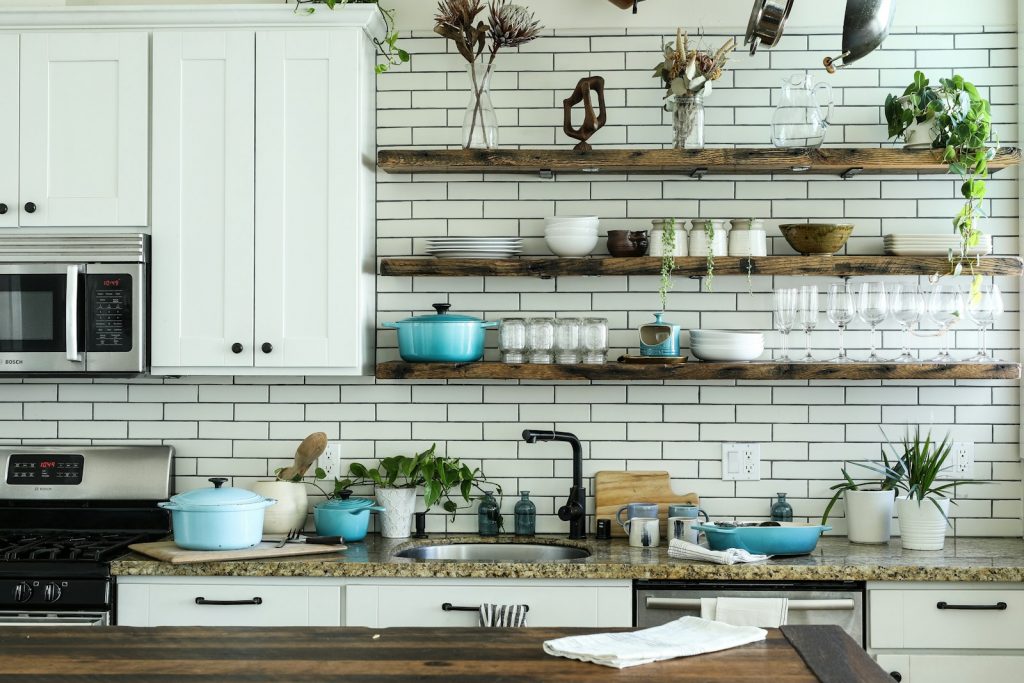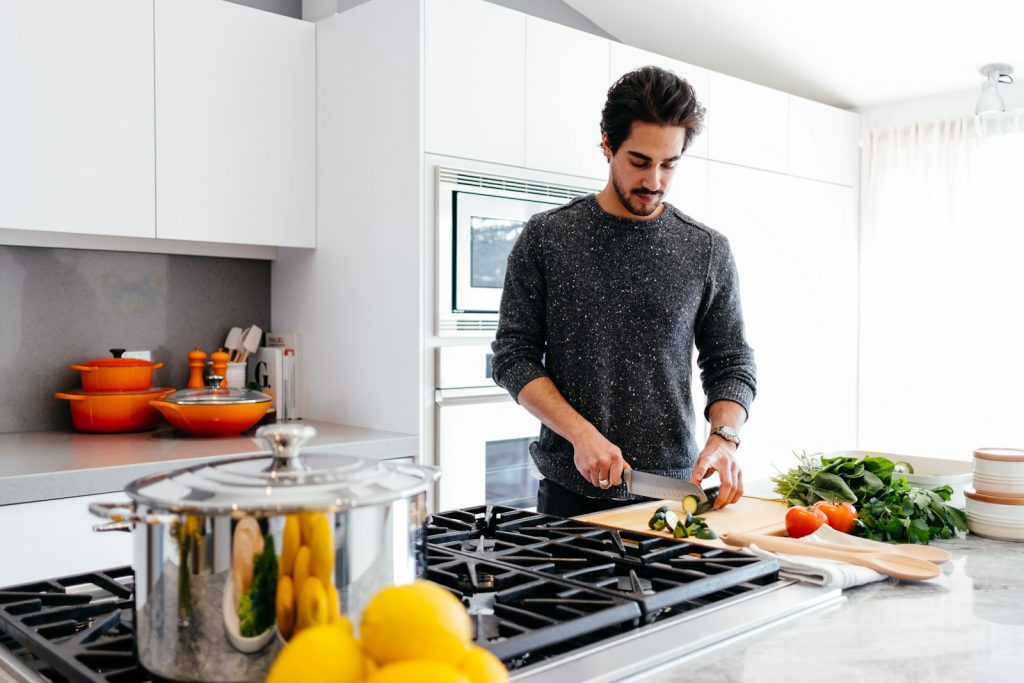Looking to reduce your kitchen’s energy use without sacrificing convenience or comfort? Whether you’re just starting your sustainable living journey or looking for new ways to cut costs and your carbon footprint, these practical tips will help you create a more energy-efficient, eco-friendly kitchen. Small changes add up—let’s make sustainability simple!
1. Switch to LED Lighting
Replace old bulbs with LED lights. LEDs use up to 80% less energy than traditional bulbs and last much longer, making them a smart swap for your kitchen ceiling, under-cabinet, and task lighting. [7]
2. Use Appliances Efficiently
Only run your dishwasher and washing machine with full loads to maximize efficiency. Select eco or energy-saving modes, and let dishes air dry instead of using the heated dry cycle. [2] [6] [5]
3. Match Pots and Pans to Burners
Use the right-sized pot or pan for each burner and always cook with lids on. This helps food cook faster and prevents energy loss. [1] [4] [5]
4. Boil Water Efficiently
Boil only the amount of water you need, and use an electric kettle instead of the stove for faster, more efficient boiling. Pour boiled water into pans for cooking to save time and energy. [2] [5]
5. Optimize Refrigerator Use
- Keep your fridge 2/3 full for best efficiency, but avoid overloading.
- Let leftovers cool before storing.
- Check door seals regularly and keep a gap around the fridge for airflow.
- Set the temperature between 35–38°F (1.7–3.3°C).
- Limit how often you open the door.
These habits help your fridge run efficiently and last longer. [6]
6. Embrace Batch Cooking & Use Residual Heat
Cook multiple meals at once to make the most of your oven’s energy. Turn off the oven or stove a few minutes early and let residual heat finish the job. [5] [6]
7. Choose Energy-Efficient Appliances
When upgrading, look for ENERGY STAR or high-efficiency models—especially for fridges, dishwashers, and stoves. Induction cooktops are particularly efficient and reduce wasted heat. [2] [3]
8. Use Smaller Appliances for Small Meals
For reheating or cooking small portions, opt for the microwave, toaster oven, or slow cooker. These use much less energy than a full-sized oven. [2]
9. Install Smart Plugs and Power Strips
Plug small appliances into smart plugs or power strips and turn them off when not in use. This prevents “phantom” energy drain from devices left on standby. [7]
10. Keep Appliances Clean & Maintained
Clean burners, oven windows, and refrigerator coils regularly. Well-maintained appliances run more efficiently and use less energy. [2]
Ready to Make Your Kitchen Greener?
Start with a few of these tips and build new habits over time. Each small change helps you save energy, lower bills, and create a more eco-friendly kitchen. For more ideas, check out our guides:
- The Ultimate Guide to an Eco-Friendly Kitchen (for Beginners & Families)
- 15 Easy Eco-Friendly Kitchen Swaps to Reduce Waste Today
- Top 10 Must-Have Eco Kitchen Products for a Greener Home
- Choosing Eco-Friendly Pots and Pans: A Buyer’s Guide
Sources
- [1] E.ON: Tips on saving energy in the kitchen
- [2] U.S. Department of Energy: Kitchen Appliances
- [3] Nolte Küchen: Saving energy when cooking
- [4] LURCH Guide: The best energy-saving tips at a glance
- [5] Home Energy Scotland: How to save energy in the kitchen
- [6] ENGIE: Top energy saving tips to save electricity in the kitchen
- [7] Green City Times: 10 Simple Changes for a More Energy-Efficient Kitchen


